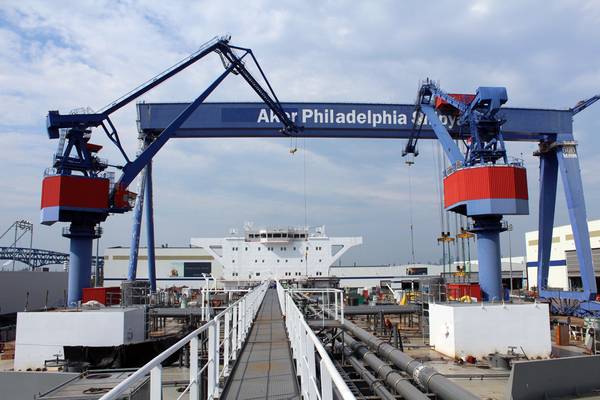
Aker Philadelphia Shipyard, Inc. (APSI), the wholly-owned U.S. subsidiary of Aker Philadelphia Shipyard ASA (AKPS) has released an update regarding an incident that occurred yesterday at its facility. According to Aker, numerous factually incorrect news reports have emerged, and this release was intended to clarify certain points.
Aker reported that at approximately 6:50am, maintenance was being performed on the shipyard’s gantry crane when an electrical fault occurred. Following protocol, NAVSES and the Philadelphia Fire Department responded. One employee, who is now in stable condition, was injured and transported to an area hospital for treatment. No one else was injured and no individuals were trapped.
The incident is under investigation by APSI’s Safety and Maintenance departments. According to Aker, damages to the crane will be evaluated as part of the investigation, but are not expected to require significant repair. APSI’s projects are not expected to be materially impacted by the incident and overall operations are continuing without interruption.


